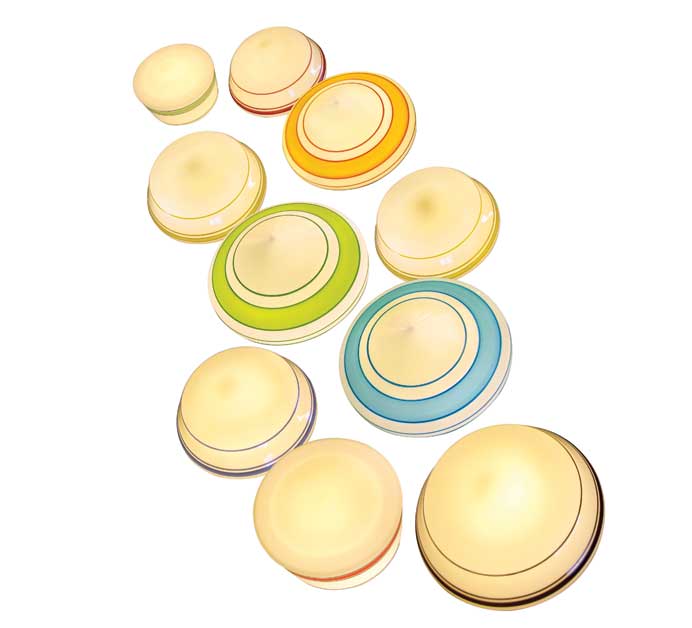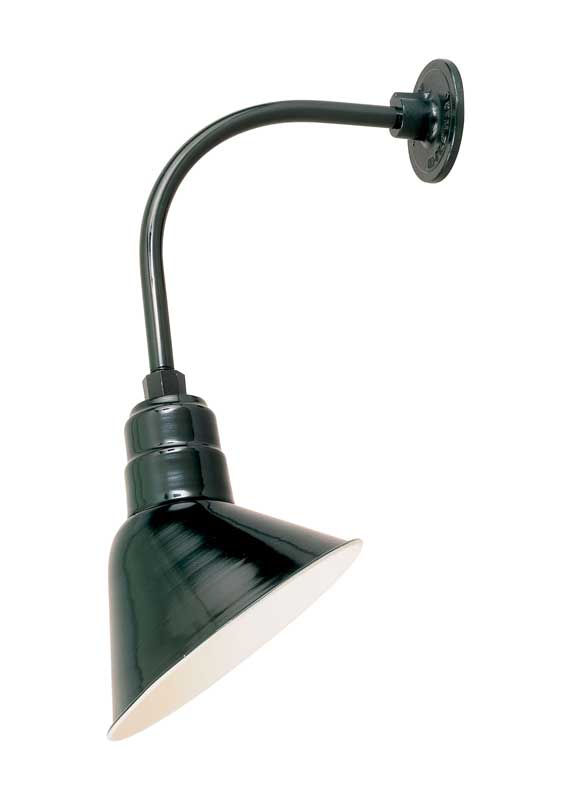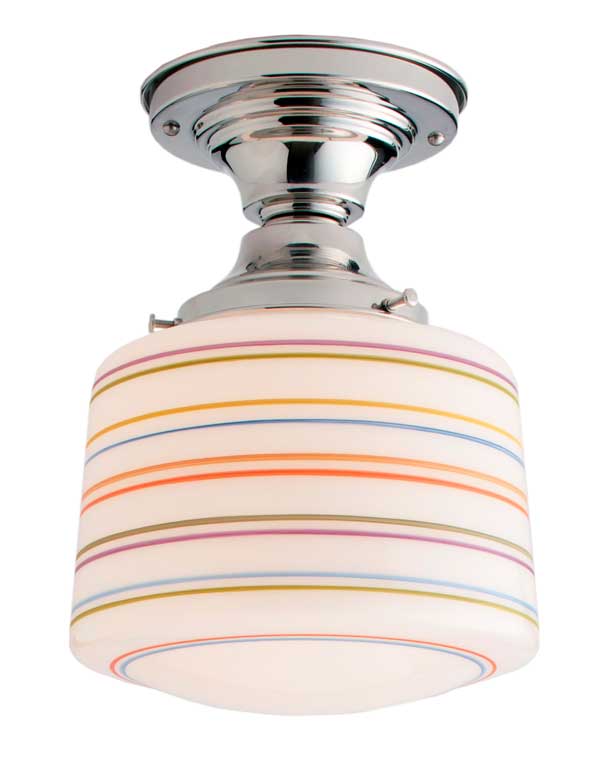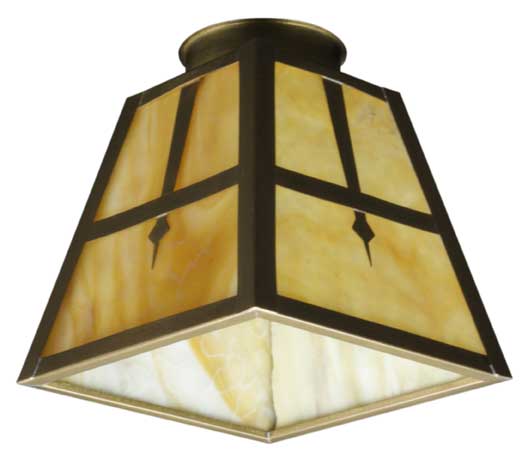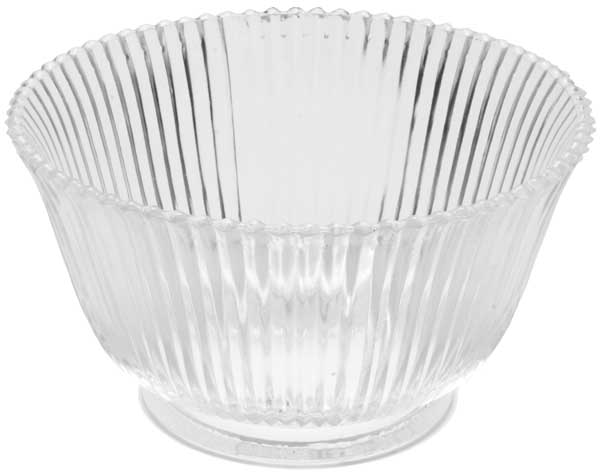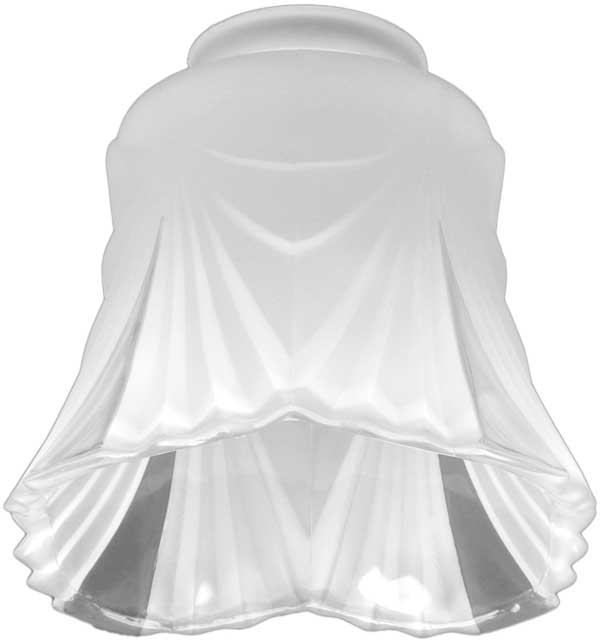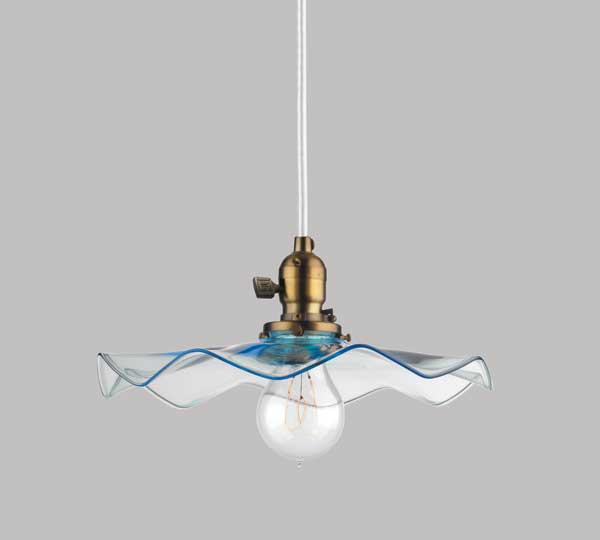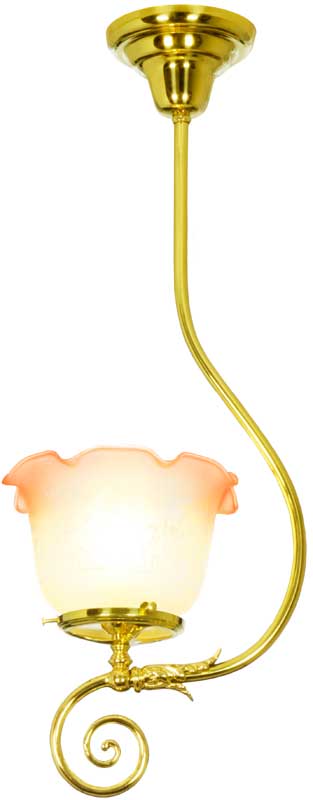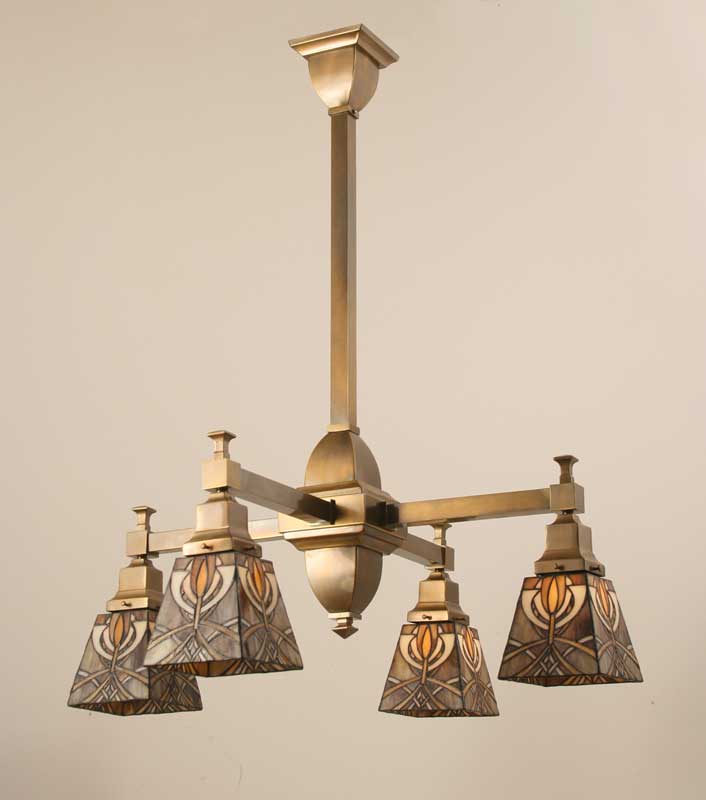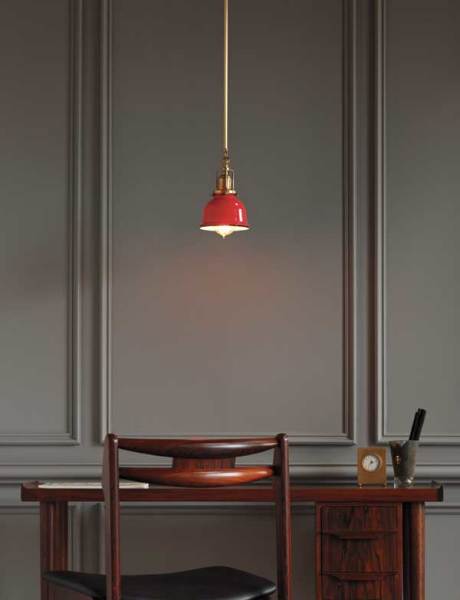
The ‘George,’ an industrial brass shade from Rejuvenation, is most colorfully available in five high-gloss enamels and more than a dozen metallic finishes.
They are painted with stripes, finished in high-gloss enamel, or saturated with color in a mold or in the high heat of a glass-blower’s glory hole. New looks in shades for lighting fixtures are not only lustrous and novel, but many of them are also revivals of fixtures once created with historic manufacturing processes.
Take Rejuvenation’s molded ‘Bottle Blue’ scalloped glass reflector shade. The flirty, skirt-like shape, which dates to an 1893 General Electric catalog, was first reproduced in solid opal glass by a U.S. glass manufacturer with three generations of expertise about a year ago. Injecting color and clarity into the shade required even more finesse.
Hand-blown art glass, which offers iridescence as part of its color package, has been a favorite since the Arts & Crafts Revival dawned more than 30 years ago. But it’s not uncommon to find these brilliantly colored shades among the standard offerings in the catalogs and on the websites of dozens of lighting companies.
Even shades for early gaslight fixtures have joined the color brigade: The edges of fluted or scallop-shaped rims are dipped in color, often a delicate peachy-rose or pink verging on red.
Metal light shades, too, are popping up in dozens of colors—perhaps chasing the example of Barn Light Electric’s distinctive porcelain enamel “barn” fixtures. These revive pleasantly utilitarian fixtures seen on gas stations and warehouses from the 1930s through the end of the 1950s. Porcelain enamel is actually a bonding of colored enameled glass to steel, so the material is ideal outdoors as well as inside.
Best of all, the standardization of fitter sizes means you can go as bold or subtle with color as you like. The most common fitter size is 2½”. Many period-style single-bulb pendants, sconces, and ceiling fixtures have a 2½” fitter, but so do double sconces and chandeliers with multiple sockets. While some fixtures are designed with a specific shade or style of shade in mind (often with larger or less common fitter sizes), manufacturers have been making fixtures that work interchangeably with different shades since the dawn of the electric era. Getting the look you want may be a matter of simply changing out one set of shades for another.
Shades painted in bands of graduated stripes were unusual enough to launch an entire company. When Brian Faherty discovered a cache of original cast-iron molds for shades in an upstate New York warehouse about 10 years ago, he founded Schoolhouse Electric. Now hand-painted shades, striped and otherwise, are ubiquitous for schoolhouse and other early to mid-20th-century shades, from a select group of makers. In another innovation, Schoolhouse Electric recently introduced a series of shades in classic shapes, with either wide or thin stripes in both solid and multi-colored variations, moving the look from the first half of the 20th century to mid-century and beyond.
Depending on location and use, you may want to go with something simple and white, ideal for ambient lighting. To make the shades the focal point of the fixture, select for color, pattern, relief, or all of the above. (Fixtures with porcelain enamel shades are a great way to combine directed task lighting with a jolt of color.) And if your goal is to make a dramatic statement—say, with a chandelier over the dining room table—you might dress up the fixture with the most striking shades you can find.
For sources, see Period Lighting in the Products & Services Directory.



